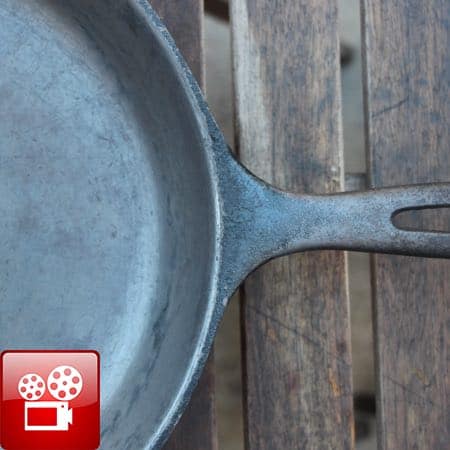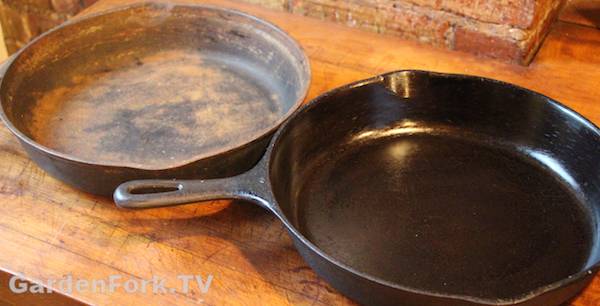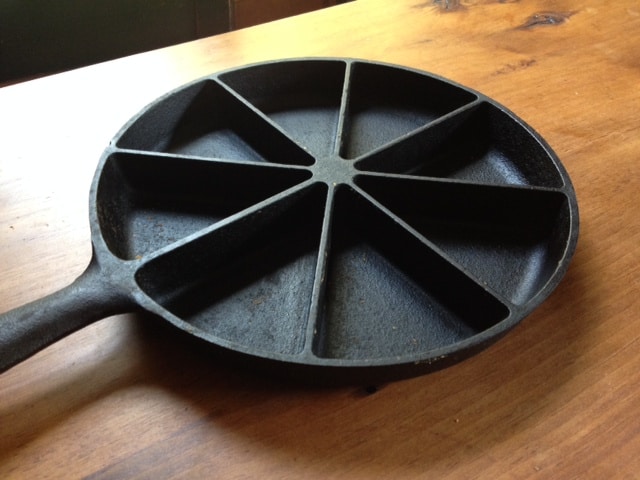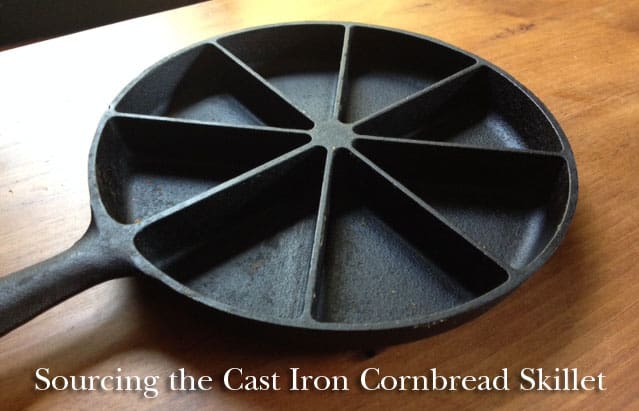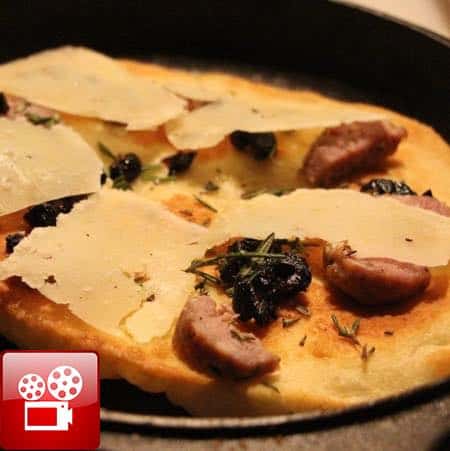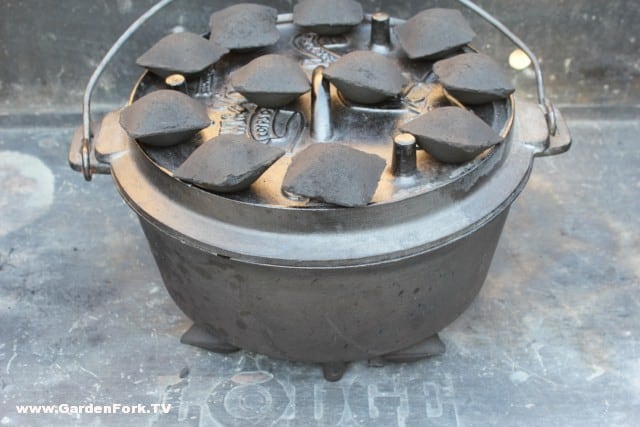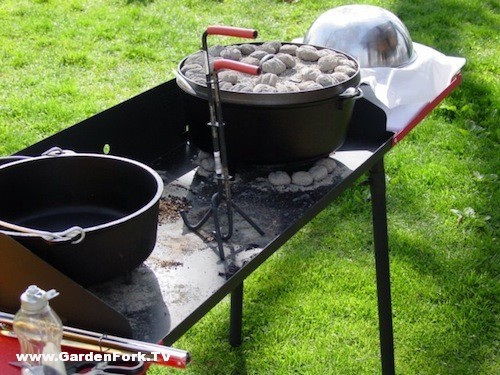Can you use soap on cast iron? A HUGE debate in the world of cast iron cooking, watch our video to find out the answer:
Can You Use Soap On Cast Iron
Yes. Here’s why:
When you apply a thin film of vegetable oil, ideally flax oil or sunflower oil, to the pan, and then heat it, the oil polymerizes. Polymerization is a chemical process where oil becomes a plastic like finish. The oil dries out, and is no longer an oil.
Dishwashing soap breaks down oil. Since the oil you applied, has been heated & dried, it is no longer an oil, the soap doesn’t dissolve it. So the mindset of soap ruining the finish on cast iron doesn’t apply here. The cast iron pan seasoning is now a polymer. Any food or cooking oil will get cleaned out by the soap, but the seasoning stays.
How To Care For Your Cast Iron
Use enough oil to cook your food, and when done, wipe out the pan with a towel. If there is food sticking, or you made a curry or some fragrant dish, put a little soap in the pan and clean out the pan. Set the pan back on the burner, heat it up to dry out the water. Apply a very thin layer of vegetable oil, ideally flax or sunflower oil, wipe out the excess, and allow the pan to cool off.
That’s it! Here’s the best how to season cast iron video:
A conversation in the YouTube comments of this video says a lot about this question, can you use soap on cast iron:
The Real Jim Guy: “I season my cast iron the old fashioned way with lard and i tell you from experience that dish soap strips the finish right off it to where everything sticks like glue.”
John B: “I believe that’s because lard doesn’t polymerize they way that olive oil or flax seed oil does under heat. so it remains soluble to the effects of the soap.”
Galanie: “True, unhydrogenated animal fats never dry really and won’t polymerize the way that seed oils do.”
Brrag: “I have washed my cast iron skillets with dish washing detergent for 40 years. my mother and grandmother washed theirs the same way. i once heard you weren’t suppose to use soap on them so just started cleaning with hot water. they got so nasty smelling, i went back to the soap again. Using soap does not change the taste of your food. On the other hand, not using soap will change the taste of your food; it will taste like you cooked it in rancid oil.” (Probably the best argument on can you use soap on cast iron)
Pappy: “You make so much sense… used to be called common sense but it’s not very common any more. I have a cast skillet that is at least 80-90 yrs old. My grandmother got it at Montgomery Wards (remember them?) Anyway she and my mother after her used this pan daily, washed it in soapy water, dried it, heated it and put some Crisco or bacon fat on it and that was it. It has a glass smooth bottom and cooks like a dream and is pretty much none stick. I admit it had gotten pretty grungy over the years so I cleaned it up, got most of the gunk off it and reasoned it. I don’t regularly wash it in soapy water because it cleans up beautifully with just water and a scrub brush but if it gets particularly dirty or I forget it overnight I don’t worry about soaping it up. The flax seed oil characteristics you mentioned are spot on from what I’ve also read. Once seasoned well with it you don’t need to only use flax seed oil tho, any oil will do to maintain that finish. Good video, thanks…”
If you want to buy cast iron pans, I suggest finding them at yard sales and restoring them. You can get good cast iron on amazon here. (This is an affliate link, it helps us make more GardenFork!)






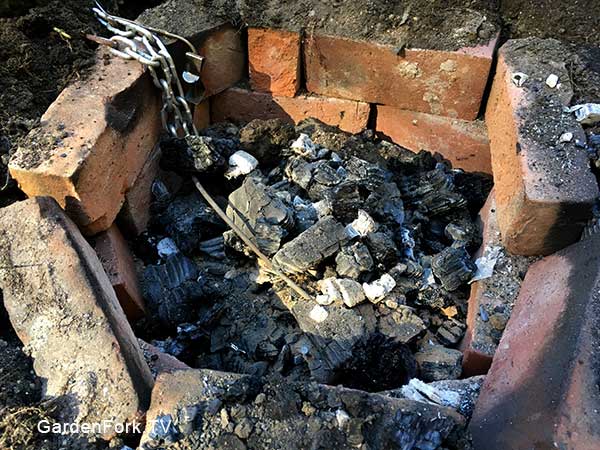



 Above is what my setup looks like for cleaning cast iron with a battery charger. Let me walk you through the process.
Above is what my setup looks like for cleaning cast iron with a battery charger. Let me walk you through the process. You will need a battery charger with a MANUAL mode. This is important. The first one I bought said it was manual, but it wasn’t. It should have a switch on it for manual. Here is a
You will need a battery charger with a MANUAL mode. This is important. The first one I bought said it was manual, but it wasn’t. It should have a switch on it for manual. Here is a  For the metal plates, I used two old baking pans. I used a wire wheel on my drill to remove the coating on the pans to expose the bare metal. DO NOT use stainless steel, bad chemistry will happen. I used a self tapping screw on each pan to attach a 12 gauge copper wire to them, as well as the wire that goes from the pans to the battery charger.
For the metal plates, I used two old baking pans. I used a wire wheel on my drill to remove the coating on the pans to expose the bare metal. DO NOT use stainless steel, bad chemistry will happen. I used a self tapping screw on each pan to attach a 12 gauge copper wire to them, as well as the wire that goes from the pans to the battery charger. Here is a top view of how my cast iron cleaning tank looks. It is important that the metal cake pans, or whatever metal you are using, does not touch the cast iron to be cleaned. I have been told that you can also use several pieces of rebar wired together for the metal plates. Or visit a scrap yard. Again, do not use stainless steel.
Here is a top view of how my cast iron cleaning tank looks. It is important that the metal cake pans, or whatever metal you are using, does not touch the cast iron to be cleaned. I have been told that you can also use several pieces of rebar wired together for the metal plates. Or visit a scrap yard. Again, do not use stainless steel. Use a wire brush to clean off the handle of the cast iron where the negative (black) clip of the battery charger connects to the pan. I don’t suggest submerging your battery clamps in the solution, therefore, if you want to submerge the whole piece, wrap copper wire around the handle and attach the clip to the copper wire above the water line.
Use a wire brush to clean off the handle of the cast iron where the negative (black) clip of the battery charger connects to the pan. I don’t suggest submerging your battery clamps in the solution, therefore, if you want to submerge the whole piece, wrap copper wire around the handle and attach the clip to the copper wire above the water line. If you’ve got the rig set up correctly, you will see bubbles start to rise from the solution almost immediately. Let it run for several hours, so all sorts of stuff will have time to bubble off. Most of all, make sure the cast iron pan being cleaned does not touch the metal plates.
If you’ve got the rig set up correctly, you will see bubbles start to rise from the solution almost immediately. Let it run for several hours, so all sorts of stuff will have time to bubble off. Most of all, make sure the cast iron pan being cleaned does not touch the metal plates. Every few hours, pull out the cast iron and clean off the crud with a dish scrubber. Flip the pan 180 degrees in the solution every time you pull it out. Finally, depending on the age and how many layers of seasoning are on the piece, you may need to use steel wool to remove some of the last bits of the material.
Every few hours, pull out the cast iron and clean off the crud with a dish scrubber. Flip the pan 180 degrees in the solution every time you pull it out. Finally, depending on the age and how many layers of seasoning are on the piece, you may need to use steel wool to remove some of the last bits of the material. 
